 The 237th episode of Doctor Who airs on the BBC. This is the second appearance of the Ice Warriors.
The 237th episode of Doctor Who airs on the BBC. This is the second appearance of the Ice Warriors.
This timeline entry leads to an entry covering this entire Doctor Who serial; there are plans to write new episodic entries in the future. You can support this effort!
Order Earl Green’s book VWORP!1 from theLogBook.com Store

 ABC airs the 20th episode of Irwin Allen’s sci-fi series Land Of The Giants, starring Gary Conway, Don Matheson, Deanna Lund, and Don Marshall. Arthur Franz guest stars.
ABC airs the 20th episode of Irwin Allen’s sci-fi series Land Of The Giants, starring Gary Conway, Don Matheson, Deanna Lund, and Don Marshall. Arthur Franz guest stars.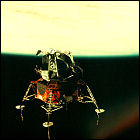 Apollo 9 lifts off on a ten-day mission to test the first lunar lander, but only in Earth orbit. Jim McDivitt and Rusty Schweickart put the lunar module, nicknamed Spider, through its paces, while David Scott mans the command module Gumdrop. This is the first flight of the completely non-aerodynamic lunar module, and various docking maneuvers and spacewalk scenarios are practiced. The crew returns to Earth in the Apollo command module, while Spider is left in a low orbit which decays two weeks later, allowing it to disintegrate in Earth’s atmosphere.
Apollo 9 lifts off on a ten-day mission to test the first lunar lander, but only in Earth orbit. Jim McDivitt and Rusty Schweickart put the lunar module, nicknamed Spider, through its paces, while David Scott mans the command module Gumdrop. This is the first flight of the completely non-aerodynamic lunar module, and various docking maneuvers and spacewalk scenarios are practiced. The crew returns to Earth in the Apollo command module, while Spider is left in a low orbit which decays two weeks later, allowing it to disintegrate in Earth’s atmosphere. BBC2 airs the 34th episode of science fiction anthology series Out Of The Unknown. Written by Brian Hayles (creator of Doctor Who’s Ice Warriors), the story stars Bernard Horsfall and Geoffrey Palmer. This episode no longer exists in the BBC’s archives.
BBC2 airs the 34th episode of science fiction anthology series Out Of The Unknown. Written by Brian Hayles (creator of Doctor Who’s Ice Warriors), the story stars Bernard Horsfall and Geoffrey Palmer. This episode no longer exists in the BBC’s archives.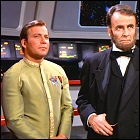 The
The  The
The 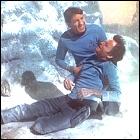 The
The 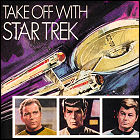 Having completed its purchase of Desilu Studios, Paramount runs the first print advertisement in Vol. 76, Issue 12 of Broadcasting Magazine, offering Star Trek reruns in syndication. Even though the last episode has yet to air on NBC, it is perhaps telling that the ad promises a set number of “79 episodes of constant quality, now being seen in over 65 countries around the world” – confirmation that there will be no further episodes beyond the current season.
Having completed its purchase of Desilu Studios, Paramount runs the first print advertisement in Vol. 76, Issue 12 of Broadcasting Magazine, offering Star Trek reruns in syndication. Even though the last episode has yet to air on NBC, it is perhaps telling that the ad promises a set number of “79 episodes of constant quality, now being seen in over 65 countries around the world” – confirmation that there will be no further episodes beyond the current season.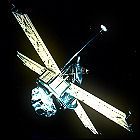 NASA and JPL launch the unmanned Mariner 7 space probe on a mission to Mars, where it will be joined by its recently-launched identical twin, Mariner 6. Mariner 7 will take five months to reach the red planet, but on a slightly faster trajectory it will arrive just days behind Mariner 6. Both will fly past Mars twice as close as the planet’s previous unmanned visitors.
NASA and JPL launch the unmanned Mariner 7 space probe on a mission to Mars, where it will be joined by its recently-launched identical twin, Mariner 6. Mariner 7 will take five months to reach the red planet, but on a slightly faster trajectory it will arrive just days behind Mariner 6. Both will fly past Mars twice as close as the planet’s previous unmanned visitors. This is the observed day of the internet’s birth, actually marking the day that the Defense Advanced Research Projects Agency chose the contractor to build the initial nodes and connections of the ARPAnet. Though the internet is ubiquitous from a 21st century perspective, its origins lie in a disquieting Cold-War-era concept of a distributed computer communications network whose operations could continue even if multiple nodes of the network have been disrupted or destroyed. ARPAnet, the forerunner to the modern internet, will become operational on an experimental basis later in 1969.
This is the observed day of the internet’s birth, actually marking the day that the Defense Advanced Research Projects Agency chose the contractor to build the initial nodes and connections of the ARPAnet. Though the internet is ubiquitous from a 21st century perspective, its origins lie in a disquieting Cold-War-era concept of a distributed computer communications network whose operations could continue even if multiple nodes of the network have been disrupted or destroyed. ARPAnet, the forerunner to the modern internet, will become operational on an experimental basis later in 1969.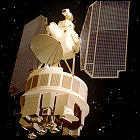 NASA launches the Nimbus 3 satellite, designed to observe weather patterns from orbit and test new weather and climate detection technologies. Nimbus 3 is the first Earth-orbiting spacecraft to test the SNAP-19 radioisotope thermoelectric generator system; devices similar to the SNAP-19 will become the primary power source for later deep space and outer solar system interplanetary missions. Nimbus 3 loses attitude control in
NASA launches the Nimbus 3 satellite, designed to observe weather patterns from orbit and test new weather and climate detection technologies. Nimbus 3 is the first Earth-orbiting spacecraft to test the SNAP-19 radioisotope thermoelectric generator system; devices similar to the SNAP-19 will become the primary power source for later deep space and outer solar system interplanetary missions. Nimbus 3 loses attitude control in  The
The  NASA formally asks various major players in the aerospace industry for proposals for what the agency sees as its two major projects for the 1970s: an orbiting space station and a reusable Space Shuttle to make routine flights from Earth to the station – which NASA hopes will be a “50 man space base” – and back again, with supplies, experiments, and new crew members. (Within mere weeks, the hypothetical station’s equally hypothetical crew will be downsized to a dozen.) In the event that the development curve on the Space Shuttle proves to be a long one, NASA says it will keep Apollo and even Gemini spacecraft in service to make flights to the station.
NASA formally asks various major players in the aerospace industry for proposals for what the agency sees as its two major projects for the 1970s: an orbiting space station and a reusable Space Shuttle to make routine flights from Earth to the station – which NASA hopes will be a “50 man space base” – and back again, with supplies, experiments, and new crew members. (Within mere weeks, the hypothetical station’s equally hypothetical crew will be downsized to a dozen.) In the event that the development curve on the Space Shuttle proves to be a long one, NASA says it will keep Apollo and even Gemini spacecraft in service to make flights to the station.